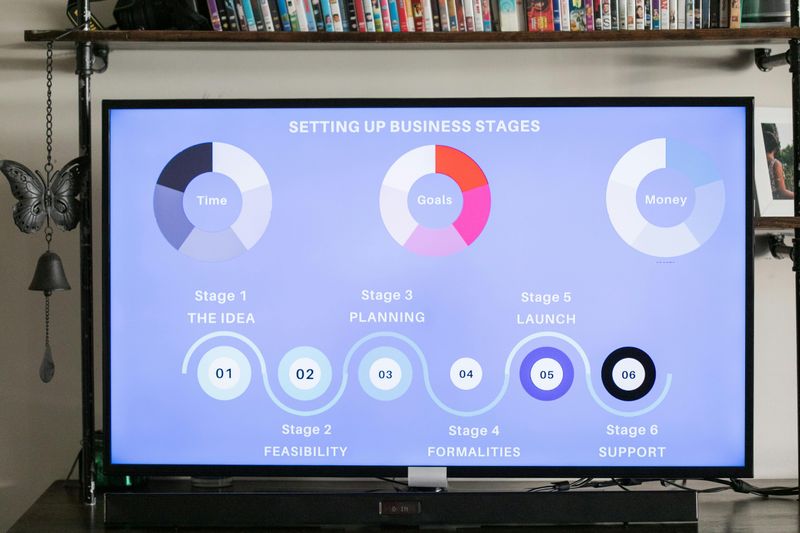16 Tactics Workers Employ to Stand Out Without Extra Effort

In today’s competitive workplace, some employees find clever ways to gain recognition without actually working harder. These strategic moves help them appear more productive and valuable than they really are. Understanding these tactics can help you recognize them in coworkers or even use them ethically to highlight your own contributions more effectively.
1. Leveraging Team Achievements

Smart employees know the power of association. They position themselves near successful projects, using “we” language to subtly claim partial credit for team wins they barely contributed to.
During presentations, they nod knowingly as achievements are discussed, creating a visual connection between themselves and the success. They might casually mention their “involvement” in conversations with leadership, leaving the impression they were instrumental to the outcome.
This approach works because most managers don’t track individual contributions with precision. By staying visible during celebrations and being photographed with the core team, these workers create a historical record that connects them to major victories without the corresponding effort.
2. Mastering Meeting Presence

Savvy workers understand that meeting participation quality trumps quantity. They remain quiet for most discussions, carefully observing the flow and key points raised by others.
Then, at precisely the right moment, they interject with a concise, thoughtful comment that builds on previous points or synthesizes the conversation. This strategic timing makes them appear deeply engaged and insightful, even though they’ve contributed just 30 seconds to an hour-long meeting.
They might ask one well-researched question that impresses leadership or offer a brief summary that demonstrates listening skills. This minimal but high-impact participation creates a lasting impression of competence while requiring far less mental effort than consistent engagement throughout the entire discussion.
3. Prioritizing Visibility Over Volume

Clever employees focus their limited energy on tasks their bosses actually notice. They volunteer for projects that require direct interaction with leadership or produce tangible results that executives regularly review.
Meanwhile, they minimize effort on essential but invisible background work. The quarterly report that the CEO personally reviews gets meticulous attention, while daily maintenance tasks are completed with minimal effort.
These workers carefully track which outputs receive attention during performance reviews and prioritize accordingly. By maintaining a presence in high-visibility areas—like contributing to the company newsletter or speaking at all-hands meetings—they create an impression of productivity that outweighs their actual workload. Their strategic selectivity creates maximum impact from minimal effort.
4. Using Strategic Communication

Communication masters send carefully timed updates that highlight progress without revealing how little effort went into it. They craft emails late Friday afternoon summarizing weekly accomplishments, knowing managers rarely scrutinize details before weekends.
These updates emphasize small wins and milestone progress while glossing over how quickly or easily these tasks were completed. They use precise technical language that sounds impressive but discourages detailed questions from non-specialists.
Monday morning follow-ups outline ambitious plans for the week, creating a perception of continuous productivity. By controlling the narrative around their work through regular, professional-sounding communications, these employees shape how others perceive their contributions without actually increasing output. Their updates always arrive without prompting, making them appear proactive rather than reactive.
5. Building Strong Alliances

Relationship-focused employees invest time in forming genuine connections with influential colleagues rather than in actual work tasks. They remember personal details about managers’ families, celebrate coworkers’ birthdays, and offer small favors that build goodwill.
These social investments create a protective network of people who speak positively about them in meetings they don’t attend. Their allies naturally assume they’re working hard elsewhere when deadlines approach, and they receive the benefit of the doubt during performance evaluations.
Strategic alliance-builders bring coffee to the overworked team lead or help the IT director troubleshoot a personal device. These small gestures create powerful advocates who naturally want to see them succeed. When promotion discussions occur, these relationships often outweigh objective performance metrics, allowing them to advance with less actual production.
6. Delegating Effectively

Masters of delegation assign challenging components of their workload to eager junior team members while maintaining oversight of the final product. They frame these assignments as “development opportunities” or “cross-training initiatives” rather than work transfers.
When delegating, they provide clear instructions and templates that make the work appear more complex than it is. They schedule brief check-ins that allow them to stay informed enough to discuss the project knowledgeably with leadership.
Once the work is complete, they review it briefly, make minor adjustments to add their personal touch, and present it to management. By retaining control of the final presentation while outsourcing the time-consuming elements, they receive credit for the entire effort while expending minimal energy. Their reputation grows as someone who develops talent while still delivering results.
7. Leveraging Technology Tools

Tech-savvy workers use automation and digital tools to multiply their productivity without additional hours. They create email templates, keyboard shortcuts, and custom macros that complete routine tasks in seconds rather than minutes.
These employees build comprehensive spreadsheets with formulas that generate reports automatically, requiring only minor updates rather than complete rebuilds. They use project management software to track deliverables, making their organization visible while the actual work remains minimal.
Browser extensions that schedule social media posts, text expanders that generate paragraphs from a few keystrokes, and automated data collection tools become their secret weapons. By investing a small amount of upfront time in setting up these systems, they create the appearance of producing twice the work of colleagues while actually spending hours less. Their technological efficiency is mistaken for exceptional dedication.
8. Staying Active on Communication Channels

Strategic communicators maintain a consistent online presence throughout the workday without actually engaging deeply. They quickly respond to Slack messages with simple acknowledgments that signal responsiveness without requiring thought.
During virtual meetings, they post occasional relevant comments in the chat, creating a record of participation while multitasking on other activities. They set calendar reminders to post questions or updates in team channels during peak visibility hours when leadership is most active.
These workers carefully time their emails to arrive early morning or late evening, creating an impression of extended work hours without actually logging extra time. By maintaining constant low-effort visibility across communication platforms, they appear deeply engaged while investing minimal mental energy. Their names appear frequently in digital spaces, building a perception of omnipresence that suggests productivity.
9. Repackaging Old Work

Resourceful employees maintain libraries of past projects, reports, and presentations they can quickly modify for new requests. When assigned a new report, they locate a similar previous document and update only the essential elements rather than starting from scratch.
They develop modular content blocks—executive summaries, methodology sections, and conclusion paragraphs—that can be mixed and matched for different purposes. Presentations receive new titles and updated graphics while maintaining the same underlying structure and content.
These workers become experts at finding opportunities to repurpose existing materials in ways that aren’t immediately obvious to managers. By maintaining meticulous digital archives of everything they produce, they can respond to requests with impressive speed that appears to reflect exceptional efficiency rather than creative recycling. Their reputation for quick turnaround grows while their actual work hours remain minimal.
10. Managing Perceptions of Busyness

Perception managers cultivate an image of being perpetually swamped with critical work. They walk quickly through office hallways carrying folders or looking at their phones with furrowed brows, signaling importance and urgency.
Their calendars remain strategically filled with ambiguously named blocks like “Project Development” or “Strategic Planning” that discourage interruptions while allowing flexible use of time. When asked about their workload, they sigh slightly before mentioning several high-profile projects, creating the impression they’re managing an exceptional burden.
These employees keep multiple monitors displaying complex spreadsheets or documents that appear impressive to passersby. By maintaining consistent visual and verbal cues of busyness, they reduce additional assignments while creating an impression of valuable contribution. Their apparent state of controlled chaos becomes evidence of their indispensability rather than a sign of poor time management.
11. Offering Surface-Level Support

Clever team members volunteer for highly visible but low-effort support roles during major initiatives. They offer to take notes during brainstorming sessions, manage the team calendar, or coordinate meeting logistics—tasks that connect them to important work without requiring subject matter expertise.
During company events, they arrive early to help arrange chairs or stay late to assist with cleanup, ensuring leadership notices their “team player” attitude. These small contributions require minimal mental effort but generate disproportionate goodwill.
When projects succeed, their names appear in the acknowledgments alongside those who did substantive work. By positioning themselves as helpful facilitators rather than core contributors, they build positive reputations while avoiding the stress of difficult deliverables. Their support roles create an impression of involvement across multiple initiatives without the corresponding workload.
12. Leveraging Quick Wins

Quick-win specialists identify small, simple tasks that generate immediate positive feedback. Rather than tackling complex, time-consuming projects, they focus on rapid-completion items they can announce as “done” in team meetings or status updates.
They prioritize fixing visible problems that colleagues frequently complain about—the broken printer, the outdated contact list, or the confusing filing system. These minor improvements generate gratitude disproportionate to the effort required.
When selecting projects, they calculate the visibility-to-effort ratio, choosing initiatives that can be completed in hours but will be noticed by many people. By consistently delivering small but appreciated improvements, they build reputations as effective problem-solvers while avoiding the mental strain of complex challenges. Their collection of quick wins creates a perception of productivity that exceeds their actual output.
13. Highlighting Minor Contributions

Contribution amplifiers master the art of making small inputs seem significant. After offering a minor suggestion that gets incorporated into a project, they reference it repeatedly in subsequent discussions, subtly expanding its importance with each mention.
During project reviews, they emphasize aspects they touched, however briefly. “I’m glad the approach I suggested for the client introduction worked so well” might refer to a two-minute conversation where they offered a single sentence of advice.
These workers strategically use phrases like “as we discussed” or “building on our earlier work” to create an impression of ongoing involvement. By carefully documenting and referencing their smallest inputs, they create a paper trail suggesting deeper contribution. Their selective emphasis transforms peripheral involvement into apparent partnership, allowing them to share credit for successes without sharing the burden of the actual work.
14. Borrowing Ideas Subtly

Idea borrowers listen carefully during brainstorming sessions, waiting for valuable contributions from others. After a colleague shares a thought that receives positive responses, they wait briefly before restating it with slight modifications or additional context.
“Building on what Sarah just said” or “To expand on Michael’s point” become their bridge phrases to associate themselves with popular ideas. They might add a small practical detail or example that makes the concept more concrete while maintaining its essential elements.
In follow-up emails summarizing discussions, they subtly position these borrowed ideas in ways that blur ownership. By consistently attaching themselves to winning concepts without generating them, they create an impression of intellectual contribution beyond their actual input. Their skill lies in adding just enough value to claim partial credit without the mental effort of original thinking.
15. Relying on Strong Presentation Skills

Presentation experts compensate for limited content with exceptional delivery. They invest time in creating visually stunning slides with professional graphics and consistent branding rather than developing substantive new insights.
These workers master confident speaking patterns, strategic pausing, and compelling storytelling techniques that make even basic information seem profound. They incorporate relevant industry jargon and reference current trends to create an impression of expertise.
Rather than conducting original research, they repackage widely available information into memorable frameworks and catchphrases that executives can easily repeat. By focusing on the medium rather than the message, they receive praise for presentations that contain little original thought. Their polished delivery creates such a positive impression that few notice the lack of substantive content or innovative thinking behind the impressive visual package.
16. Timing Work for Maximum Recognition

Timing strategists carefully plan their work completion to coincide with periods of maximum visibility. They identify when leadership pays closest attention—before board meetings, during quarterly reviews, or in advance of company-wide presentations.
Rather than finishing tasks when initially completed, they may hold polished deliverables until just before an executive review, creating a perception of just-in-time excellence. They schedule announcements of achievements to coincide with periods when competitors are struggling or during departmental showcases.
These employees save their highest-quality work for moments when the spotlight is brightest, rather than maintaining consistent output. By synchronizing their visible productivity with leadership attention cycles, they create an impression of reliability during critical moments. Their strategic timing ensures their contributions receive maximum exposure while requiring no additional effort beyond careful calendar management.

Comments
Loading…